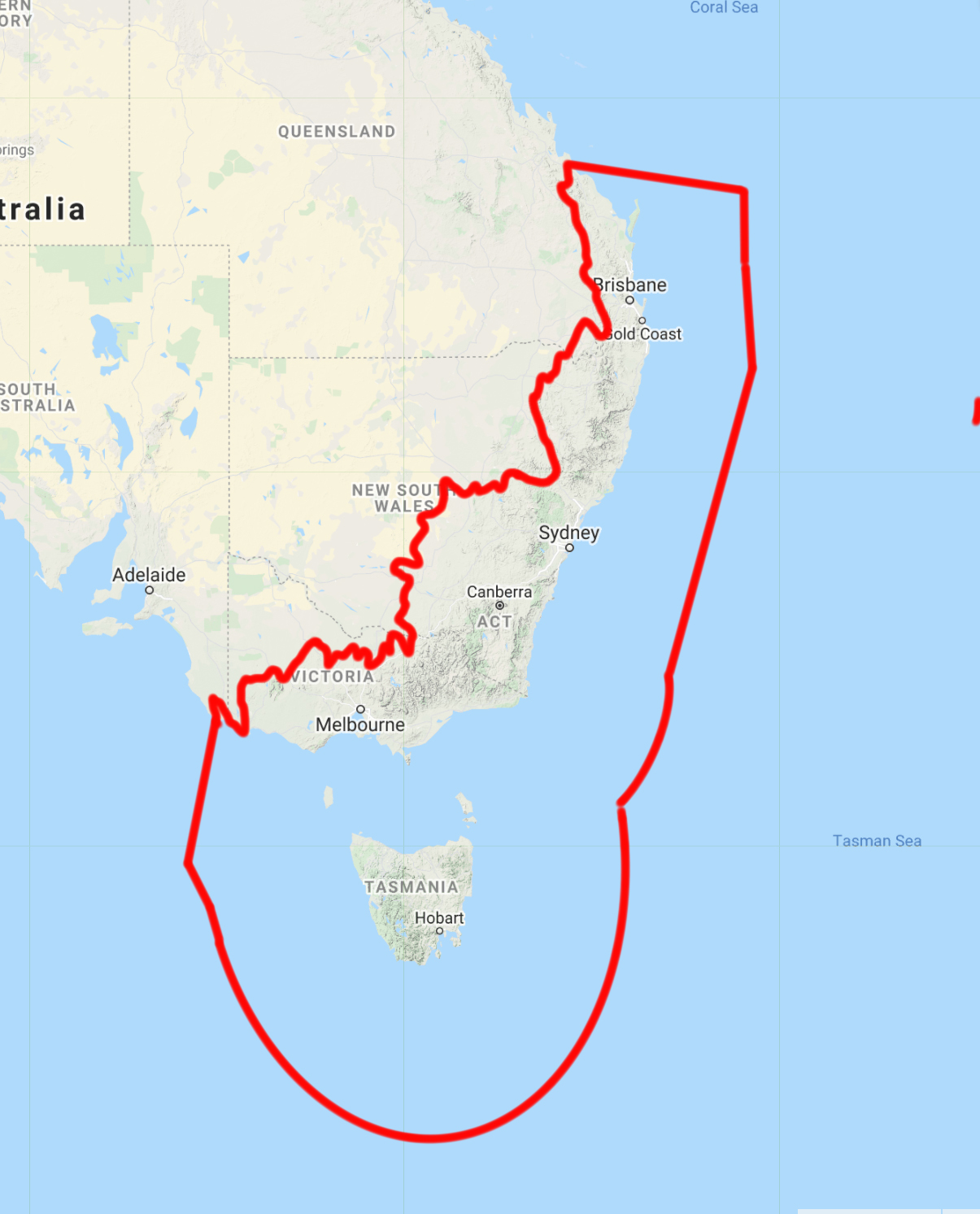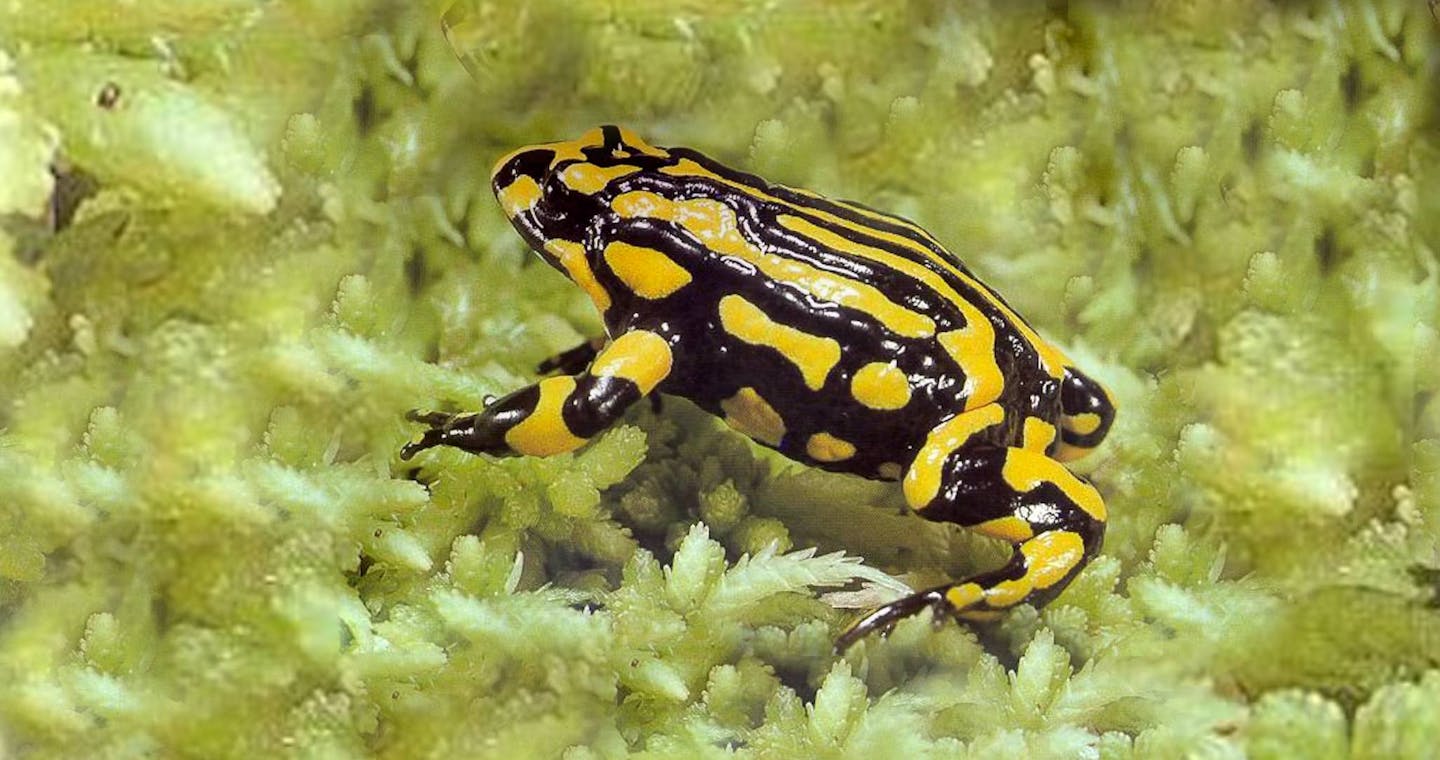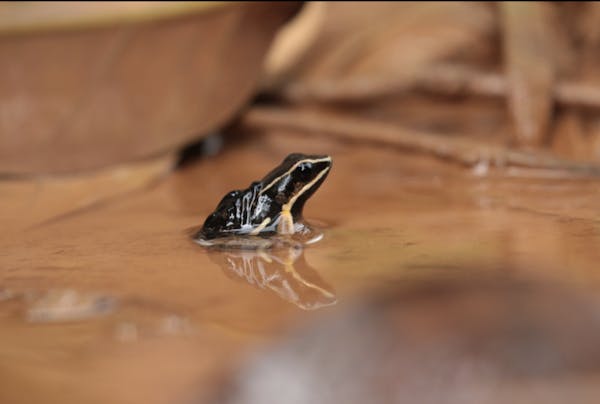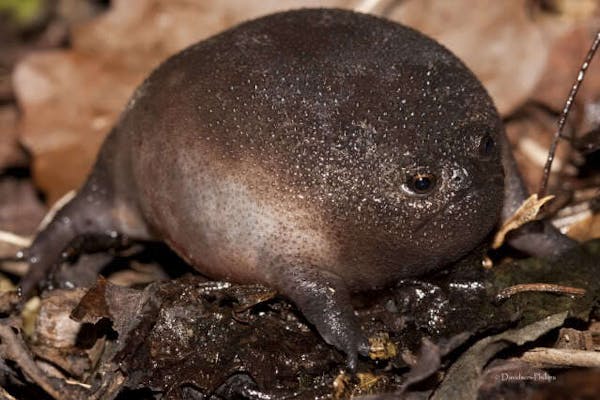Who's black, yellow, and poisonous all over? Meet the Corroboree frog
One Earth’s “Species of the Week” series highlights an iconic species that represents the unique biogeography of each of the 185 bioregions of the Earth.
With bright yellow and glistening black stripes, the corroboree frog is Australia's most renowned amphibian species. Exclusively found in two small patches spanning 400 km2 in the sub-alpine regions of the continent, they are tough to find, however, as they are primarily nocturnal and only about the size of a thumb. There are two species, the southern corroboree frog and the northern corroboree frog, which is slightly smaller and can have a greenish tint compared to its southern counterpart.

The Corroboree frog is the iconic species of the East Australian Temperate Forests & Mountain Shrublands bioregion (AU3) located in the Australia subrealm of Australasia.
Unique from every other poisonous frog species on earth, both types of these ground-dwelling corroborees produce their own poison rather than obtaining it from a food source. They secrete an alkaloid called pseudo-phrynamine from their skin, which scientists believe protects against skin infections rather than external threats. With no known predators, they have no need for a quick escape either, so they walk rather than jump. Their diet consists of that of typical frog species - mainly ants, beetles, mites, larva, and small insects.
Another rare trait of the corroborees is that they don't reach sexual maturity until four years of age. Males sing their squelch-like song to attract up to ten females into his burrow one at a time. Females lay around 38 eggs in the terrestrial nest of moss or other soft vegetation and then the male deposits sperm directly onto the eggs. Tadpoles develop but remain within the egg until the winter rains flood the area, and then hatching occurs.
Metamorphosis takes place in December through February and lasts six to eight months. As the juveniles grow, the adults hibernate during winter, another peculiar behavior of the corroboree frog. Dispersing into the surrounding woodlands, shelters include snow gum trees, bits of bark, or fallen leaves.
-2.webp)
Critically endangered, there are reports of only between 50 to 200 southern corroboree frogs left in the wild. The northern corroboree frog has not suffered as severely, labeled a step down on the IUCN's Red List of Threatened Species as endangered. The population decline is partially due to habitat destruction, expanding industry, extreme wildfires, and 4WD use.
However, the main culprit is the chytrid fungus, which was accidentally brought to Australia in the 1970s and destroyed the frogs' skin. Conservationists are hopeful, though, as immunity seems to occur with healthy adults found recently with the fungus on their skin.
Interested in learning more about the bioregions of Australasia? Use One Earth's interactive Navigator to explore bioregions around the world.
Launch Bioregion Navigator



